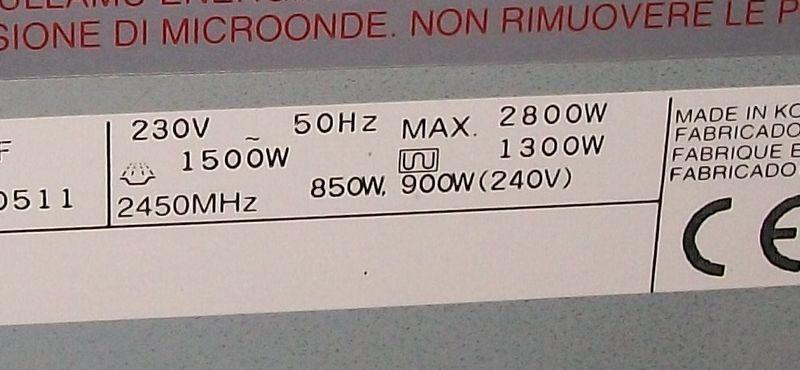Testing/inspecting the appliances in the house I've just bought, all went well until the last item - a microwave in the kitchen. Turn it round to get the details from the rating plate, and this is what I found 
The mind boggles at how they came up with quite so many ratings.
I figure it's 850W or 900W (230V or 240V) as a microwave, 1300W or 1500W as a grill, and 2800W max overall. Except that 900+1500 came to 2400 when I was at school - so dunno where the 2800 comes from.
But at least I had one proper fault to fix - I reckon a 170W freezer shouldn't have a 13A fuse in it's plug, although it's cable does look like it's sized for it.
The mind boggles at how they came up with quite so many ratings.
I figure it's 850W or 900W (230V or 240V) as a microwave, 1300W or 1500W as a grill, and 2800W max overall. Except that 900+1500 came to 2400 when I was at school - so dunno where the 2800 comes from.
But at least I had one proper fault to fix - I reckon a 170W freezer shouldn't have a 13A fuse in it's plug, although it's cable does look like it's sized for it.


